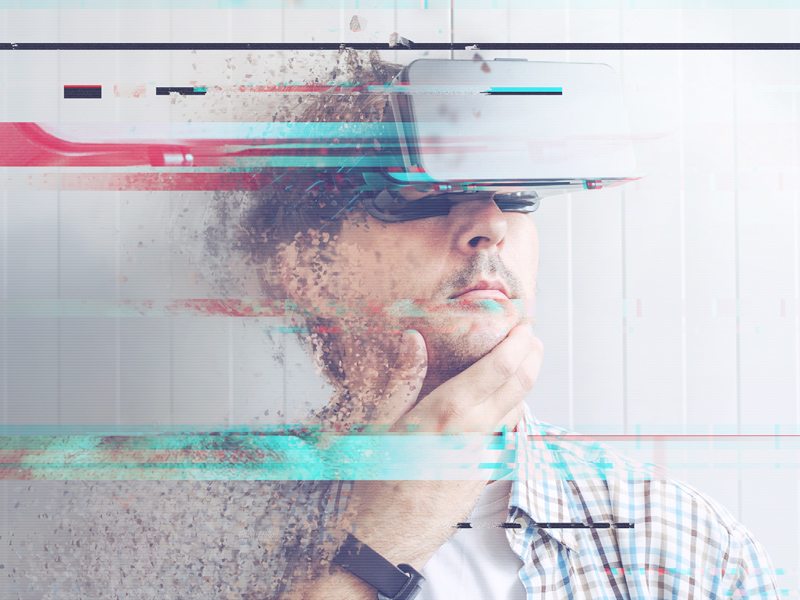By Mark Purdy, Athena Peppes and Suning An
The physical constraints of distance and geography shape how we live, work, produce and consume. But advances in Extended Reality technologies promise to break the limits of distance and create new sources of value marked by an appeal to the imagination.
In 2016 the world went crazy for the augmented-reality game Pokémon Go. In the same year, Alibaba, the world’s largest retailer, introduced Chinese consumers to its virtual-reality store, Buy+. More recently, Facebook announced that its Oculus Go VR headset will go on sale in 2018 at $199 – roughly 170 euros or 150 pounds – as part of the company’s goal of getting one billion people into the world of virtual reality.
We label such technologies – augmented reality (AR), virtual reality (VR), and also mixed reality (MR) – collectively with the umbrella term “extended reality” or XR. Many believe that they have, so far, over-promised and undelivered. But the examples above reflect a set of trends that are colliding to turn the promise of XR into (actual) reality. One recent estimate pegged the industry’s potential value at $200 billion as soon as 2020.
How can business leaders take advantage of this massive emerging opportunity? They must first understand, and then prepare for, the coming of the Imagination Economy – an economy where the widespread presence of XR technologies allows people to transcend physical limitations and unlock new sources of economic value.
[ms-protect-content id=”9932″]
A Collision of Trends
The three most important trends converging to usher in this new economic era are the approach of peak consumption, the evolution of the way people think about work and organisations, and rapid technological advances.
Peak stuff. Consumers’ demand for experiences over ownership is increasing. We see this in the growth of the travel and tourism sector, which has outperformed global economic growth for six consecutive years. And this trend may well gain steam: 78 percent of millennials report that they’d rather spend more on experiences than material goods. Some retailers have attributed disappointing sales to this shift in consumer preferences. But it doesn’t have to be an either-or trade-off: virtual experiences can be used to enrich consumption. At a food and drink festival in Singapore, Diageo gave guests a VR headset and earphones during a whisky tasting. As visitors tasted the whisky, they were taken on a two-minute virtual tour of Scotland and the distillery in the Highlands. Eighty-five percent of participants reported an enhanced experience, which also translated into sales of the product and plans to roll out the VR experience to other markets.
Changing Workplace. The modern workplace isn’t what it used to be. Fewer people work for a single company or go to the office every day. In the US, for example, estimates indicate that 50 million workers freelance. This figure will likely grow as more baby boomers choose a “staggered” retirement. These workers are looking for ways to stay active with work, look for their next project with ease, be part of a bigger enterprise, and maintain their independence. XR technologies could become important tools for bringing together an increasingly fragmented workforce.
Technological Building Blocks. Technological developments such as 3D printing, superfast connectivity, sensors, and human-computer interaction are creating a strong foundation on which XR technologies can build. For example, the development of cloud computing and 5G networks have the potential to meet the computational demand of wireless VR headsets, whose data consumption is projected to grow by 650 percent over the next four years. The development of haptic technology gives users the illusion of touching a real object in a virtual world. And advances in eye-tracking technology allow users to pick up, aim or throw an object in virtual games just by looking in a certain direction. Further technology improvements – in battery life on mobile devices, for example – will help the Imagination Economy take off.
The Promise of the Imagination Economy
In the next five to ten years, the growing penetration of XR technologies will blur the boundaries between the real and the virtual – in the marketplace, the workplace and society.
The Marketplace. The gaming and entertainment industries are at the forefront of changes in consumption patterns. From 2016 to 2021, the compound annual growth rates of AR and VR games are expected to reach 50 percent. The live-streaming of events viewable with VR headsets, such as the Rio 2016 summer Olympic games and Coldplay’s Chicago concert in 2017, has also started to take off.
But other industries are making forays with XR technologies too. Ikea’s new AR app uses smartphones’ rear-facing camera to let consumers place digital replicas of the company’s furniture in their living rooms. Shoppers can walk around that virtual furniture and evaluate it from all sides. The 3D furniture shows up at scale with 98 percent accuracy, with true-to-life representations of the texture, fabric, lighting and shadows.
The Workplace. The Imagination Economy is also enabling new ways to produce, not just consume. A broad range of organisations are starting to take note. From 2016 to 2021, the use cases in education are estimated to grow at a rate of 166 percent; in therapy and physical rehabilitation at 152 percent; and in public infrastructure maintenance at 138 percent.
Many businesses are already deploying XR technologies as training tools. UPS plans to train student delivery drivers using VR headsets that provide them with realistic streetscapes and a 360-degree view. This virtual training presents drivers with a heavy dose of hazards, which they might not encounter when practicing in the real world. In this risk-free VR world, drivers can learn valuable – and damage-free – lessons.
The Social Sphere. In healthcare, VR technologies can be used as therapy for physical and psychological illnesses and even to treat substance addictions. Research shows that playing VR games eases patients’ reported pain up to 50 percent, significantly better than other forms of distraction, such as music or video games. It also showed that playing VR games reduces activity in areas of the brain associated with pain perception. Diageo announced that it would experiment with using VR to curb binge drinking, following its launch in 2016 of a 360-degree experience that puts the consumer in the front seat of a drunk-driving crash.
Mixed reality is even being used to solve crimes. For instance, Black Marble, in partnership with Microsoft, has made available a solution for law enforcement officers to improve crime scene recording and evidence preservation. And (much) further afield, NASA’s astronauts are using VR to simulate working on the Martian surface and the International Space Station.
Great Expectations
After years of relative disappointment, hopes are also high for what XR technologies can do for job creation, access to talent, and faster innovation.
New Job Creation. Just as the creation of personal computers brought about a large number of new jobs and occupations, the Imagination Economy holds similar promise. Engineers, programmers and designers who specialise in XR technologies will be needed, and completely new roles could be created, such as ethics specialists for the virtual world. Aware of the potential for job creation, the New York City government plans to open up a VR/AR lab in Brooklyn.
Better Access to Talent. XR technologies will also give companies better access to pockets of talent far from physical offices. Microsoft is developing a system or set of technologies called Holoportation that will use 3D cameras to capture a person’s movements in real time and construct a realistic hologram. This will be a big improvement over the limitations of current technologies, as colleagues will be able to interact as if they are sharing the same physical space.
Innovation. In the Imagination Economy, companies will be able to test and iterate previously unattainable or unfeasible products and services. This will help shorten innovation cycles. Take architecture. Traditionally, architects and builders share ideas through sketches, blueprints or two-dimensional renderings. New VR tools will allow designers to create a building and then step down onto the street level to experience it at life-scale. Their ideas can be evaluated not only by how the design looks but how it feels to be in the space.
Anticipating Change
In addition to the opportunities, the world of XR will also test companies, consumers and societies with a new range of challenges.
Industry Disruption. As virtual reality becomes an increasingly acceptable substitute for physical experiences, industries that rely on brick and mortar may need to look for new sources of competitive advantage. Consider what might happen to airlines, given that business travel accounts for about 30 percent of annual revenues. Some companies, such as Intel, are already holding all shareholder and annual board meetings virtually, in efforts to cut down on air travel. This shift raises questions about how the air travel industry can entice passengers in a world where they compete not just with other airline companies but also with VR tourism firms. One strategy might include using points of sale as “experience centres” to help customers select their next destination, or using in-flight VR entertainment to attract passengers.
Privacy and Data Protection. Employees and customers will have privacy concerns in an increasingly XR world, as activities are easier to track in virtual than physical reality. Shifting more activities into virtual environments increases vulnerability to hacking of personal information. And there is much uncertainty about XR’s impact on intellectual property and other legal and regulatory issues. Recently Mattel announced that it had scrapped Aristotle, a voice-controlled child monitor fitted with cameras, after parents expressed concern about how the images and data would be used.
New Ethics. Companies have will also have new responsibilities. Consider the potential for new ethical and health issues to arise, such as addiction to XR. Organisations need to anticipate these challenges and act before they become major problems. In a recent survey of youth in the UK, 71 percent supported the use of pop-up warnings once certain limits of social media use have been approached or exceeded. In South Korea, where online gaming addiction is a serious issue, the government introduced a law to prevent children under the age of 16 from playing computer games between midnight and 6:00 a.m. Similar measures may be needed to prevent potential addictions to XR.
*********
The rise of the Imagination Economy promises to improve access to new services and experiences, boost job creation and job matching, and give companies a much-needed productivity burst. As with other powerful emerging technologies, business leaders will need to work with governments and institutions of civil society to address the ethical and privacy concerns. One thing is certain: our reality is no longer just what we sense in the physical world. It’s about to be extended in ways few have imagined.
[/ms-protect-content]
About the Authors


 Mark Purdy is a Managing Director and Athena Peppes is a Manager with Accenture Research; both are based in London. Suning An is a Specialist, also with Accenture Research, in Beijing.
Mark Purdy is a Managing Director and Athena Peppes is a Manager with Accenture Research; both are based in London. Suning An is a Specialist, also with Accenture Research, in Beijing.



































